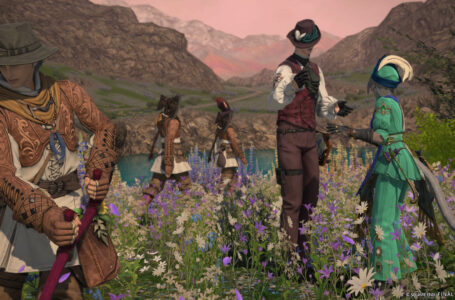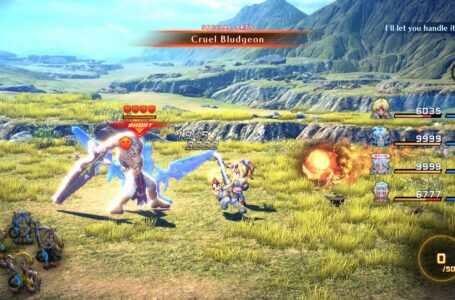The Returner: Stats, skill and strategy in Final Fantasy XIV
One of the things I’ve always found striking about Final Fantasy XIV — and one of the aspects that sometimes makes me a little hesitant to recommend it to those who are big fans of the old turn-based games — is how it has a markedly different balance between the importance of stats, strategy and player skill than your average single-player RPG.
Let me explain: in your typical offline single-player turn-based RPG, depending on how it’s been designed, either your stats or your battle strategy will be the most important factor when determining whether or not you will be successful.
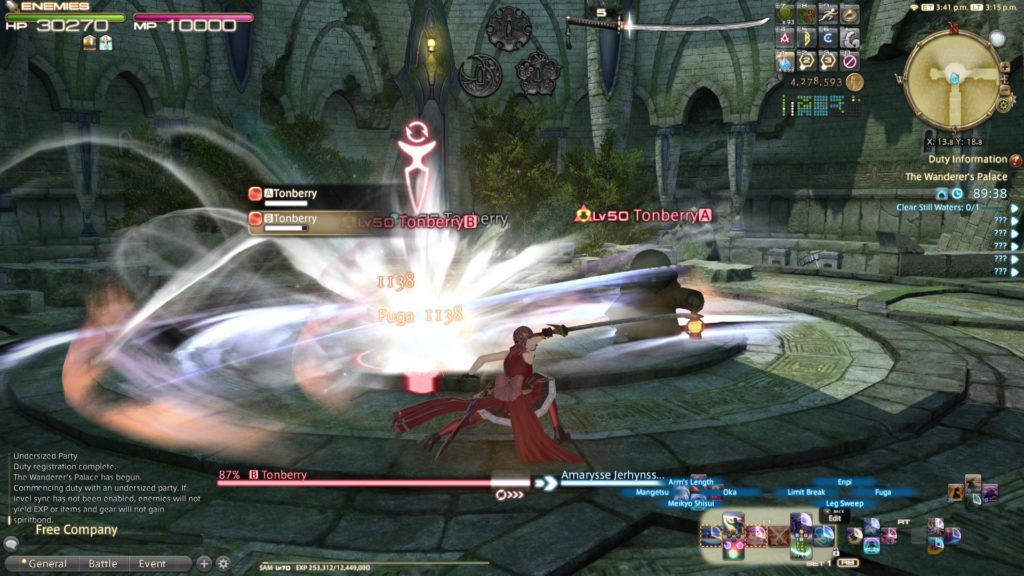
Arguably in many cases stats are always the most important, because in most single-player RPGs, you can freely outlevel a lot of tricky encounters if you’re really struggling. Having difficulty with a boss? Gain a level or five and come back; either the increase in your characters’ overall power level will help matters, or perhaps unlocking some useful abilities will be the key to victory.
That said, many RPGs from over the years have been wise to this, which led to the rise of the “superboss” — foes who can’t easily be overcome simply by grinding; foes who require a solid strategy to defeat. The Final Fantasy series has actually led the charge in this regard for many years, with powerful foes such as the Iron Giant appearing as early as Final Fantasy III, and some of the most notorious examples showing up in Final Fantasy V’s latter hours.
In both of these cases, though, the need for actual player skill — as in dexterity, accurate movements and fast reactions — is relatively minimal, even in the Active Time Battle-based installments in the series. If you have a good strategy or high stats — or preferably both — then your victory is all but assured.
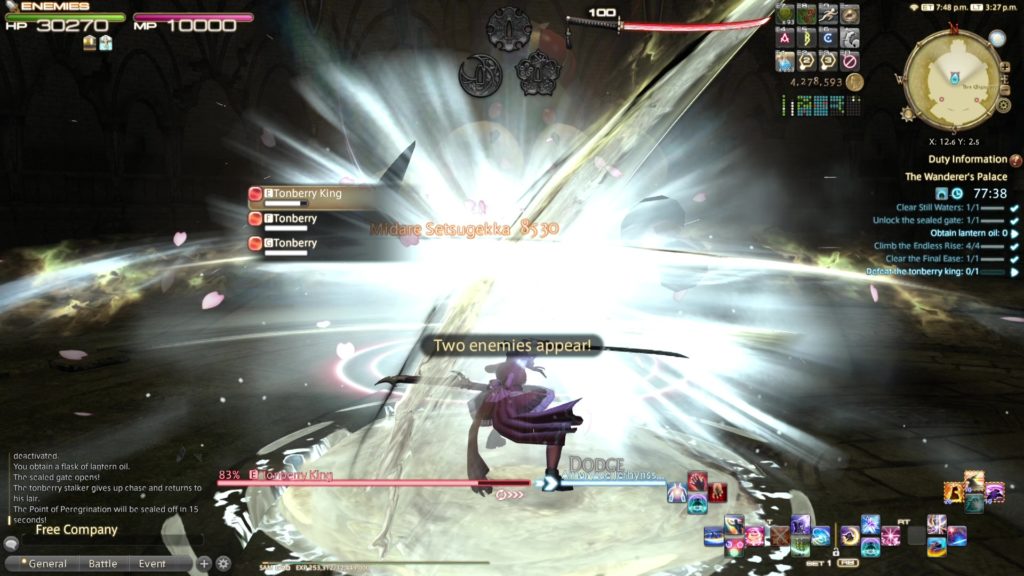
Final Fantasy XIV is a little different in this regard, even if you’re playing the New Game+ mode like I am. Early in the game, yes, you can outlevel dungeons and trials then run them using the “undersized party” system (known colloquially among the community as “unsynced”) for an easy win — though there are rewards you miss out on by doing this. But the further you go, the less likely it is that your stats will get you over a hurdle by themselves; you’ll need to know the mechanics of the fights in question — the strategy side of things — and, perhaps most importantly, you’ll need to be able to execute those mechanics correctly. That’s where the “skill” part comes in.
For those yet to experience Final Fantasy XIV for themselves, Final Fantasy XIV’s boss encounters are typically tightly choreographed affairs. Bosses have distinct, recognisable lineups of abilities, and you usually get plenty of warning before these abilities go off — both in the form of casting bars showing the enemy preparing to use them, and visible telegraphs that indicate the area of effect or who is being targeted by them.
Success in Final Fantasy XIV boss fights, then, is less about hitting things as hard as possible — though that is, of course, helpful — and more about knowing where to move about the battlefield and when. Experienced players will be ready for bosses’ various attacks well before they happen, even, which can make for an oddly beautiful sight when you see an entire 8-player raid or 24-player alliance raid moving in perfect harmony. (It happens. Sometimes.)
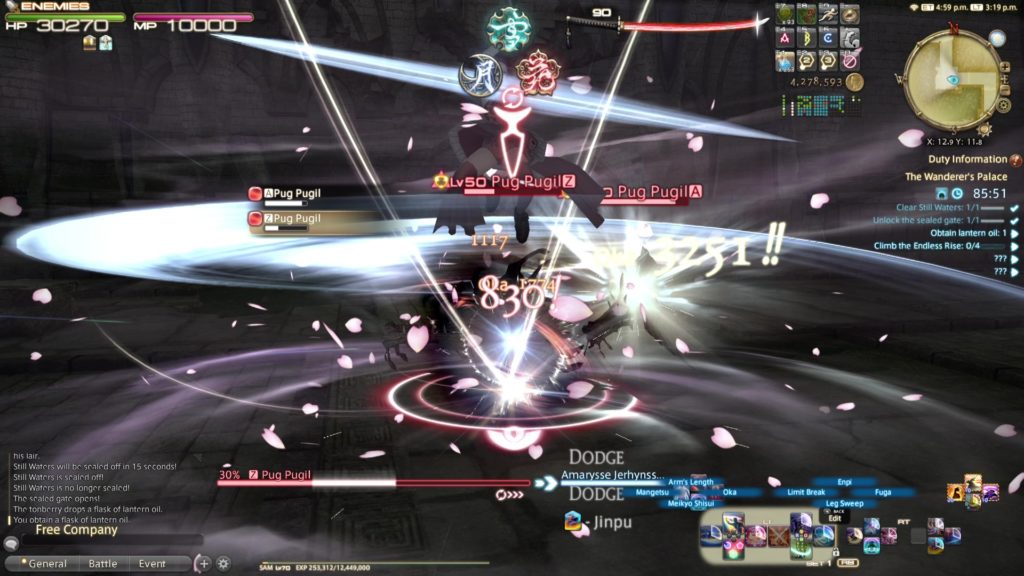
That “skill” side of things remains consistently important, though, even when you’re playing in the way I’ve been playing up until now. As I’m now into the post-2.0 content of the game — the stuff that was the former “endgame” of Final Fantasy XIV: A Realm Reborn — I’m starting to run into encounters that are a little more difficult to solo, even as a character twenty levels higher than her foes.
This first became apparent during the Leviathan fight from patch 2.2, which marked the first point (outside of an ill-advised solo jaunt into The Binding Coil of Bahamut) where I’d actually had difficulty taking something down alone. No longer could I just stand there and wail on an enemy with Samurai’s most powerful abilities and combos; now I had to actually pay attention to the mechanics of the fight, move around to avoid things and do the right thing at the right time.
I successfully cleared Leviathan solo, but pretty much reached my limit with Ramuh from 2.3; 8 level 50 players’ worth of damage was just a little too much for a badly equipped level 70 character to weather completely solo, even performing all the mechanics. So out of curiosity, I decided to try a few of the 4-player dungeons from later in the 2.X patch cycle solo to see how I got on with them.
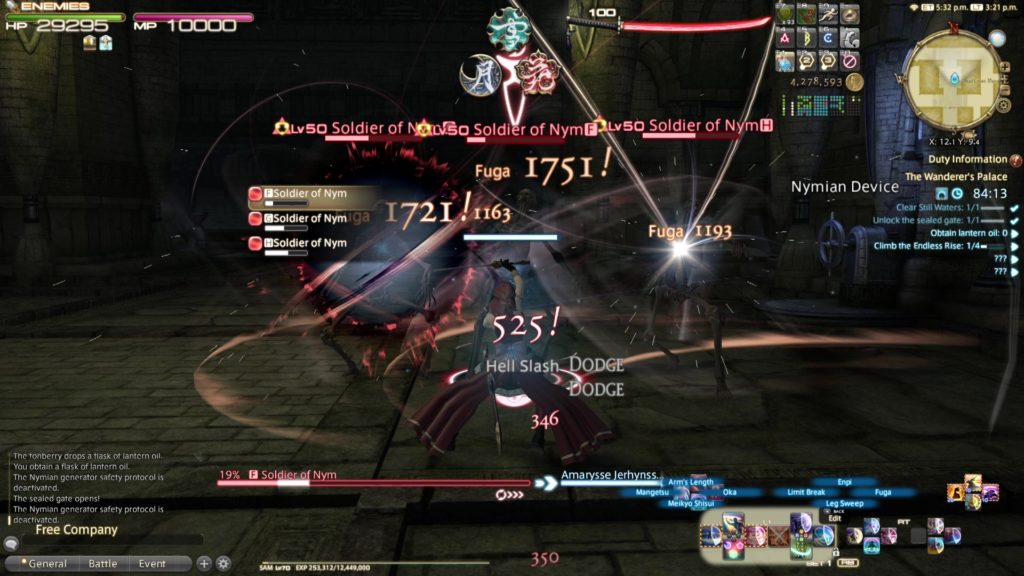
First up, I tried out Wanderer’s Palace, which was one of the two original post-50 dungeons that unlocked after you’d beaten the main story of 2.0. This was pretty easy, as I expected it to be — though you still had to pay attention to the dungeon’s unique mechanic of the giant Tonberry Stalker wandering through the halls and stabbing you for great damage if you got too close. The boss fights in here were very straightforward indeed — even the Tonberry King, which could be quite challenging for fresh 50s back in the day.
At the other end of the spectrum, I decided to give Sastasha (Hard) a go. This is an alternative take on the very first dungeon you do in Final Fantasy XIV, and comes from much later in the patch cycle. I picked this one specifically because I remembered it had quite a mechanically dense final boss, and thus figured it would be a good test of whether or not it was possible to “do mechanics” while simultaneously putting out enough damage solo to be able to clear the fight.
Pleasingly, this fight ending up striking what I felt was the perfect balance for a solo encounter. I absolutely had to perform the critical mechanic of taking down the Kraken’s Arms, and I absolutely had to position myself carefully in order to avoid taking too much damage. I could have maybe gotten away without using my self-healing abilities if I was a little more careful, but they were certainly a welcome addition to my arsenal.
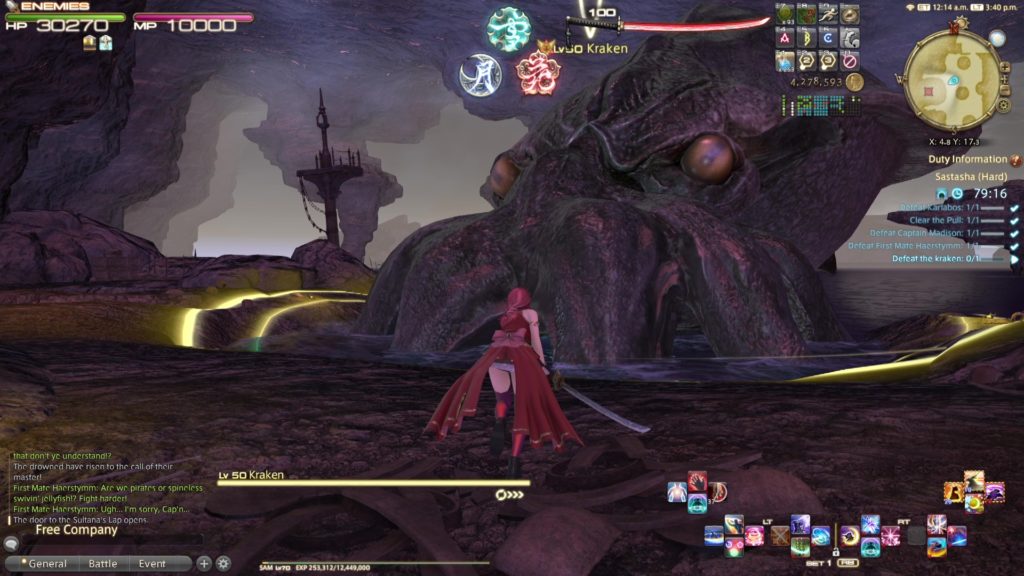
More than anything, though, I felt the critical importance of playing my class skilfully and dextrously. Samurai is a class that is heavily dependent on both combos of abilities performed in succession and “weaving” in extra abilities between ticks of the main global cooldown. In order to succeed in this fight, I needed to perform these combos and the intermittent weaving flawlessly, as well as paying attention to my own position on the battlefield and the foes that were present at any given moment.
Back when I played regularly, I often felt like Final Fantasy XIV, when played with a controller in particular, had an odd amount in common with fighting games in terms of how helpful developing muscle memory for various combinations of abilities is. And this battle at the conclusion of Sastasha (Hard) definitely brought those memories back; before long, I wasn’t even thinking “RT+B, RT+LT+B, RT+up, RT+LT+B, RT+B, RT+LT+B, RT+Y, RT+right…” and so on — I was just doing it instinctively.
Once you start getting “in the zone” like that in Final Fantasy XIV, that’s when you really start setting yourself up for success. Of course, getting your stats to an appropriate level that is practical for the encounters you’re facing and understanding the core strategy of each fight is absolutely essential — particularly in the larger-scale battles for 8 or 24 players — but you should never underestimate the importance of player skill. It’s something that really sets Final Fantasy XIV apart — and, for me, has always made its combat more and more enjoyable the further you go.
Join The Discussion
Rice Digital Discord
Rice Digital Twitter
Rice Digital Facebook
Or write us a letter for the Rice Digital Friday Letters Page by clicking here!
Disclosure: Some links in this article may be affiliate links, which means we may earn a small commission if you make a purchase after clicking on them. This is at no additional cost to you and helps support Rice Digital!
- Letter from the Editor: passing the torch - June 30, 2023
- Super Woden GP 2 is looking promising - June 30, 2023
- Inti Creates is making a 32 bit-style Love Live action platformer - June 26, 2023





